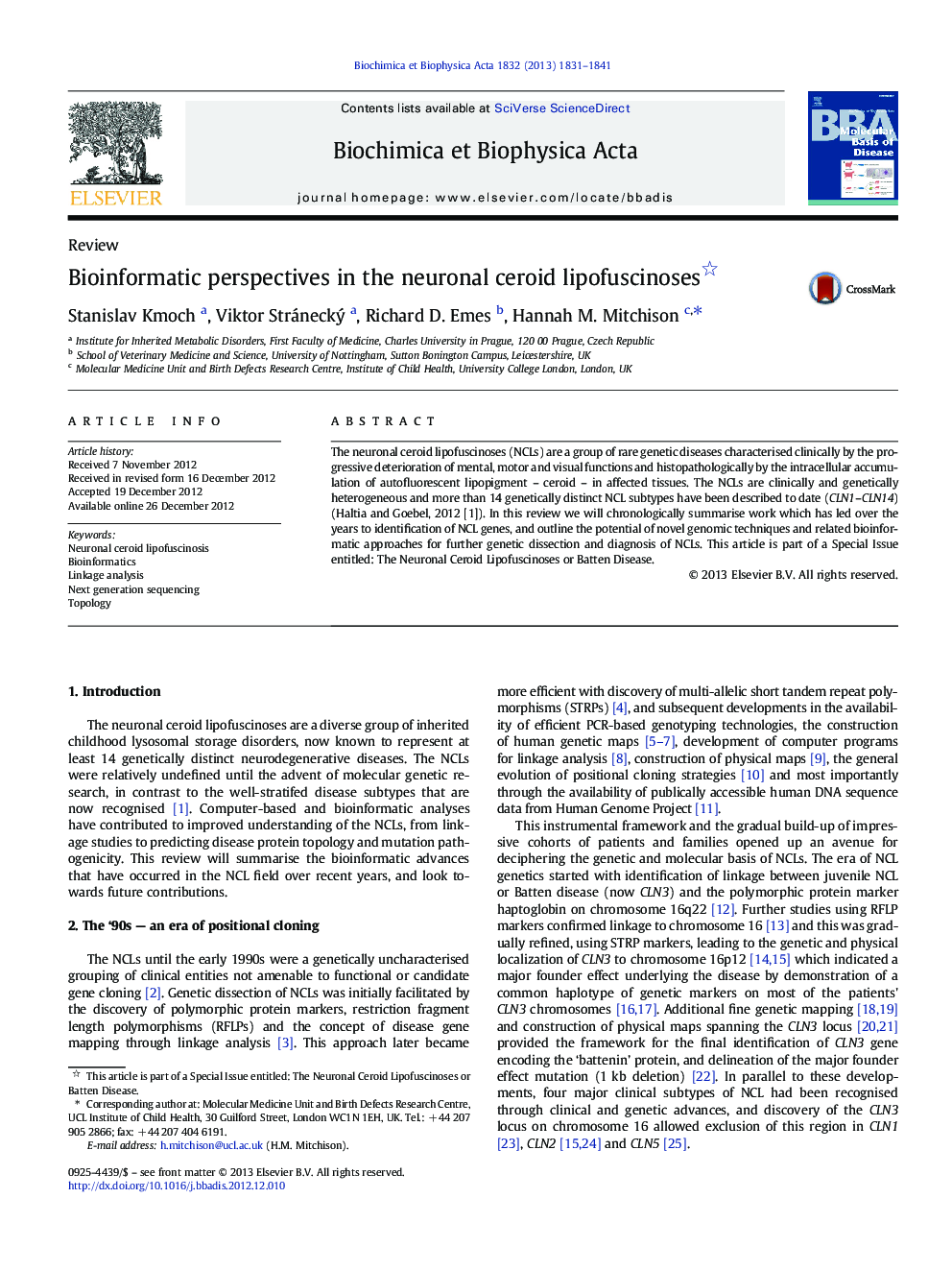| Article ID | Journal | Published Year | Pages | File Type |
|---|---|---|---|---|
| 1904814 | Biochimica et Biophysica Acta (BBA) - Molecular Basis of Disease | 2013 | 11 Pages |
The neuronal ceroid lipofuscinoses (NCLs) are a group of rare genetic diseases characterised clinically by the progressive deterioration of mental, motor and visual functions and histopathologically by the intracellular accumulation of autofluorescent lipopigment – ceroid – in affected tissues. The NCLs are clinically and genetically heterogeneous and more than 14 genetically distinct NCL subtypes have been described to date (CLN1–CLN14) (Haltia and Goebel, 2012 [1]). In this review we will chronologically summarise work which has led over the years to identification of NCL genes, and outline the potential of novel genomic techniques and related bioinformatic approaches for further genetic dissection and diagnosis of NCLs. This article is part of a Special Issue entitled: The Neuronal Ceroid Lipofuscinoses or Batten Disease.
► Computational work has aided NCL genetics, protein topology and mutation prediction. ► Past genetic linkage and modern genomics defines 14 NCL genes subtypes and new disease links. ► Allied genomic-bioinformatic studies have re-shaped the phenotypic complexity of NCLs. ► Defining the full NCL genomic/proteomic landscape will assist targeted therapies.
